Ultimate Buyer's Guide to Akiflow vs Sunsama in 2024
Akiflow Vs Sunsama
24th Sep, 2024

Sunsama and Akiflow offer powerful task management features and a host of tools for managing your calendar and time better, here's an in-depth look.
Choosing between Sunsama & Akiflow?
Akiflow and Sunsama are two big tools right now in daily planner apps.
Picking between them is super hard because they offer really similar experiences helping you better co-ordinate the week ahead and plan in the most important tasks.
Let's help you pick the perfect one for you and give you our take on the best of the breed.
Both of these tools are very similar in nature—actually, they are the closest of them all on the daily planner applications front. In this comparison feature, we’ll set the record straight and see which one is the best investment for your time and money: Sunsama or Akiflow.
What we'll cover in this article:
Let's give you the best picture of both of these tools to sse. which one is best:
- What both applications do?
- How you can use both apps in everyday life
- Pros & cons of each tool
- How much they both cost
- Final verdict and recommendation
What is Akiflow?
Akiflow is task management software combining tasks, calendars, and task consolidation by bringing tasks from apps like ClickUp, Notion, and Gmail. It is available on macOS, Windows, iOS, and Android. Akiflow is also known as a daily planner application.
Akiflow is used by freelancers, busy professionals, and those who want more than task management apps. It is well-known for managing tasks and calendars in one and comes in a similar market to apps like Motion & Sunsama.
What is Sunsama?
Sunsama is a daily planner app that lets you organize your week ahead with tasks from other apps and calendar events from popular tools like Google Calendar.
It is available on desktop (macOS, Windows), iOS, and Android. It is very popular with busy professionals who want to manage their time with work-life balance as a focus.
Feature Breakdown
Both Akiflow and Sunsama are similar, but what really put them apart in terms of daily planners and how do I know which one will be better for me than the other:
Akiflow Pros
These are the best elements of Akiflow and where it excels:
Better & More Integrations
With 10 integrations, both Sunsama and Akiflow offer a good amount of optionality — but Akiflow goes further by adding a Zapier integration offering up to 3,000+ connections possible, a much better optionality.
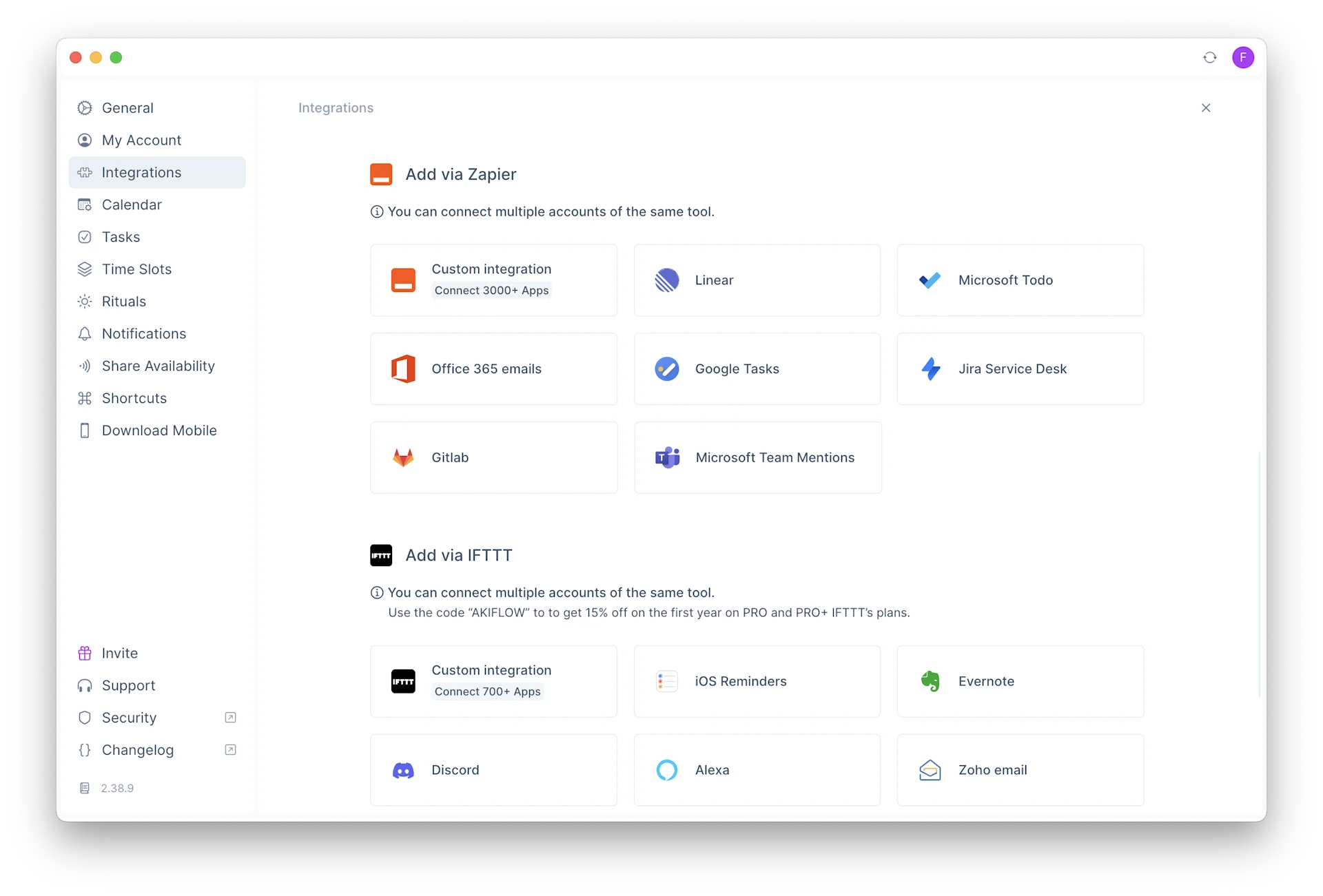
The tools you can connect and bring into Akiflow allow you to connect with tools within apps like Zapier and IFTTT to create small automation. This is popular for those who better make Akiflow their task dashboard for the day ahead.
This allows you to connect services that Sunsama cannot currently provide, like Microsoft To-Do or Linear, to manage tasks from those platforms.
Better Scheduling Meetings
Whilst Akiflow doesn't have the best meeting scheduling tool - there's a way to share availability with other people that you cannot do with Sunsama (although Sunsama has great meeting note abilities). In Akiflow, you can share availability with a link or with a selection of dates that can be copy and pasted.
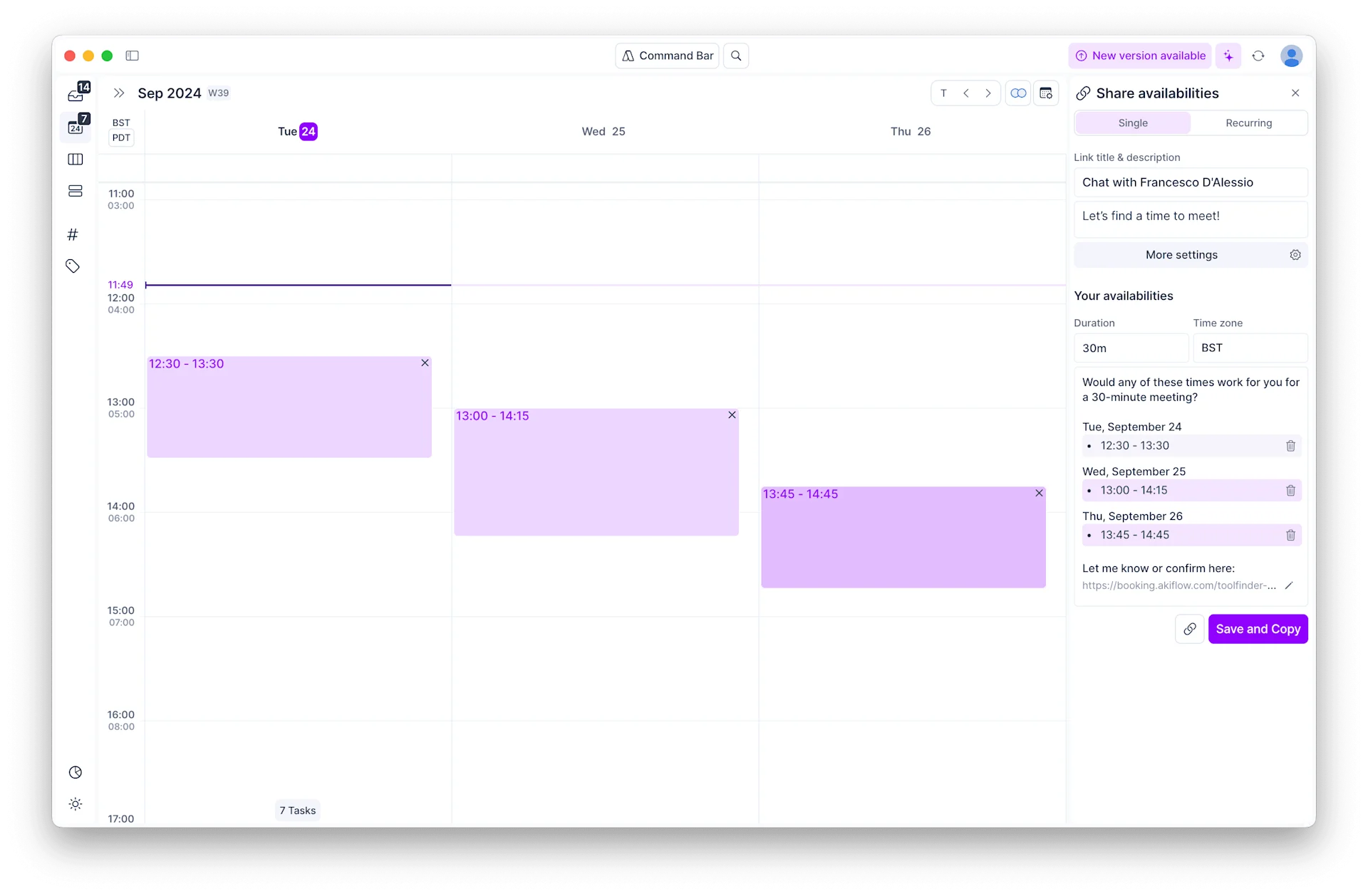
This is perfect for sharing externally and makes Akiflow a great way to handle events, meetings, and tasks in one—something Sunsama lacks. This works well, and you can create some parameters in settings to better manage the meetings coming into your schedule with defaults and pre-created meeting details for new meetings.
Better Time Blocking
A new feature from Akiflow has come to the table called "Slots," allowing you to create a series of tasks within a time block.
This is perfect for those who calendar-block and want to better add a bunch of tasks instead of creating a messy handful of tasks outside and stuffing them in - or even just having them live in the inbox.
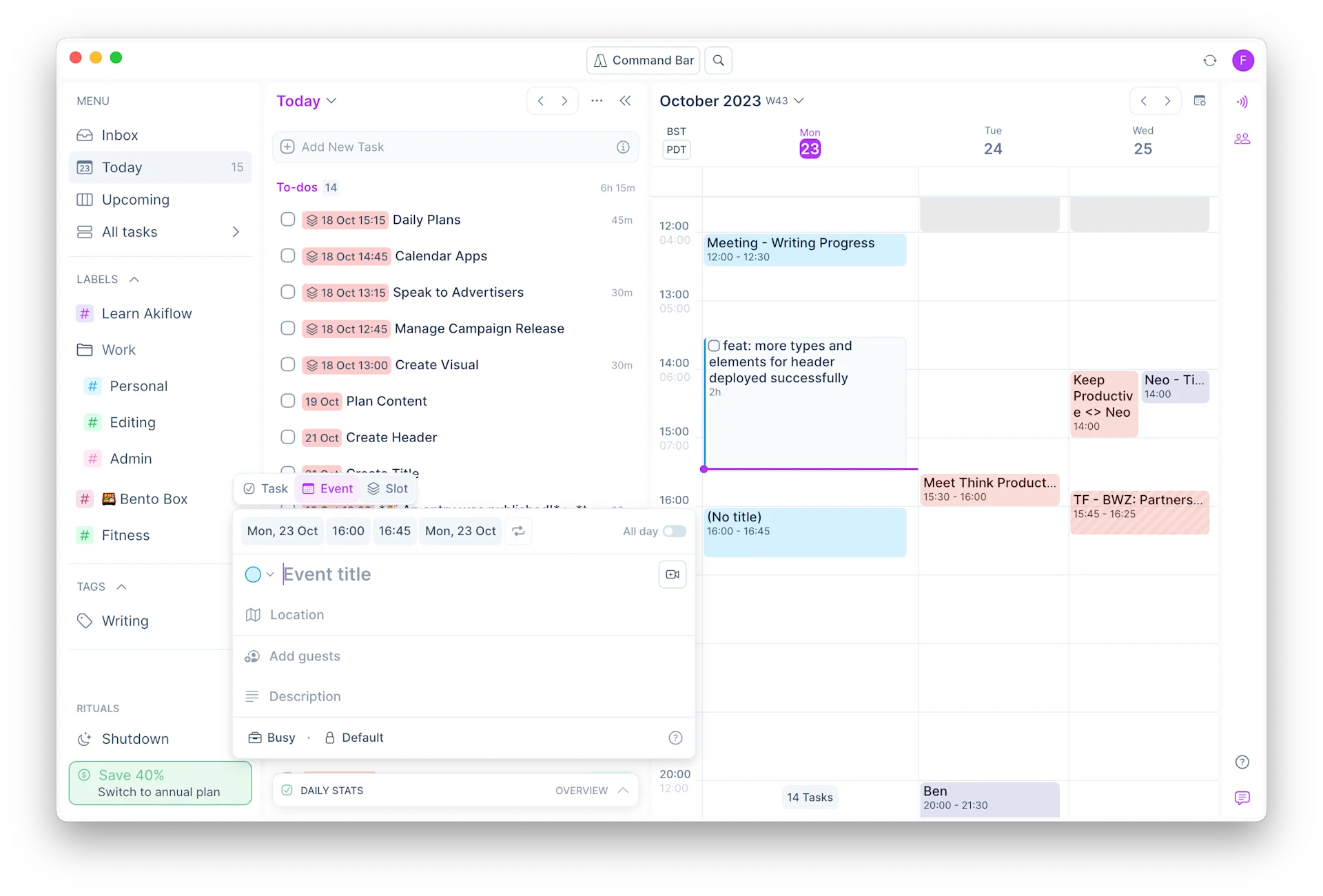
Time slots is a decent feature that we haven't seen in Sunsama. The closest thing in Sunsama is the weekly objectives feature which focuses more objectively about tasks.
Sunsama Pros
There are plenty of brilliant elements in Sunsama with a focus on better mindful approaches to tasks there are plenty of novel features within Sunsama:
Better Guided Planning
While Akiflow has added guided planning more recently, Sunsama has been the king of this for many years, allowing users to plan their week better. We still believe that Sunsama does this best despite a deeper exploration into Rituals, which is Akiflow's guided planning.
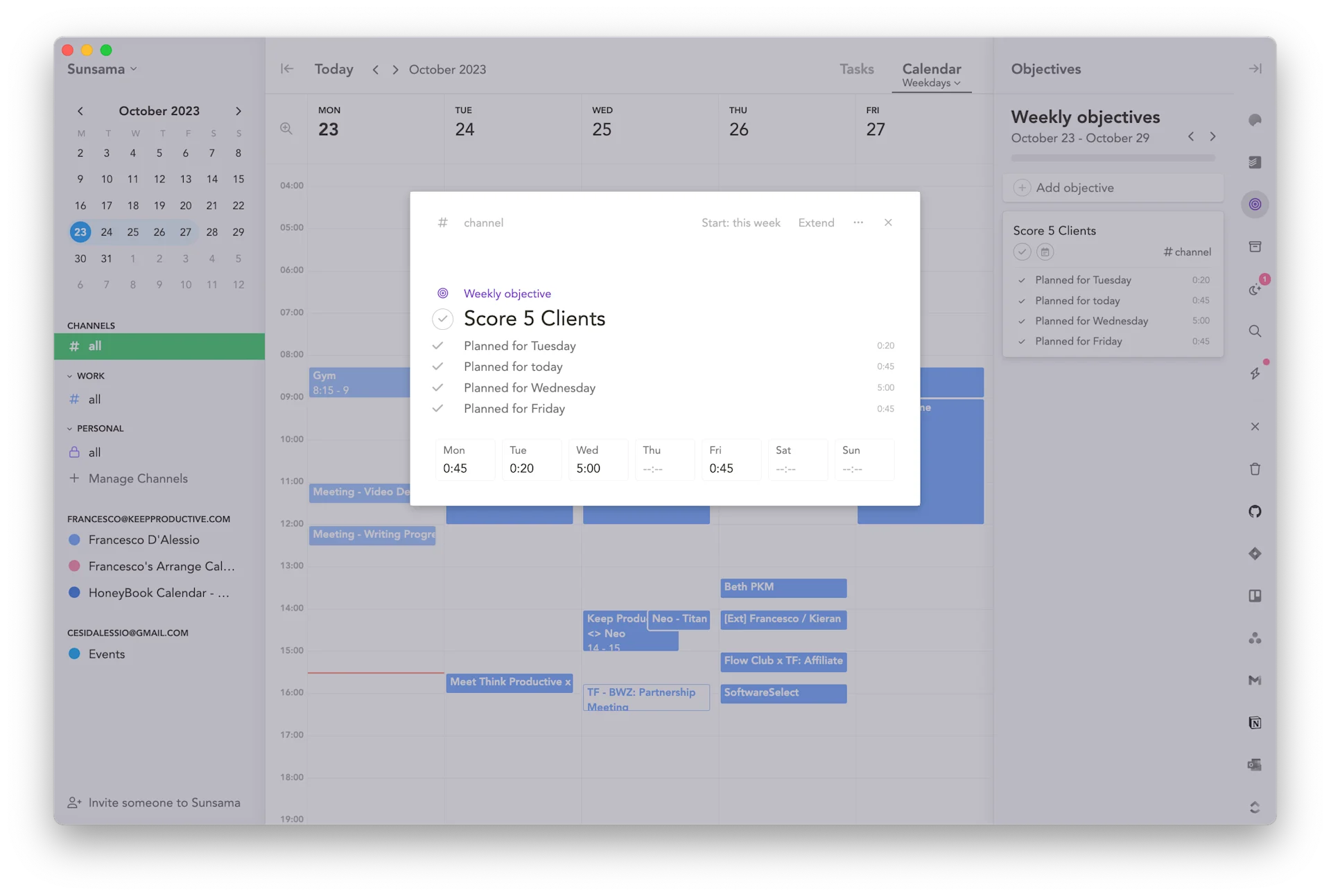
Sunsama starts and ends the day with you. This is great for your holistic approach to task management, which oozes throughout the application into features like weekly objectives, focus mode, and auto-scheduling—all mentioned below.
One of those is weekly objectives, which allow you to pick the front-running tasks for the week and then stem your planning down from that.
This is like a "skip the bs" feature that allows you to set up a weekly objective and auto-plan in dedicated time per day on each of these. This is much more holistic instead of getting trapped into micro-tasks that don't make sense. Sunsama’s premise and values scream work/life balance. The branding and messaging just ooze this focus on your focus and it makes Sunsama quite an appealing experience as they push for you to limit your work hours, making more of a focus on priority and even locking (sort of) out of Sunsama when the day is complete and next day is planned.
Better Focus Modes
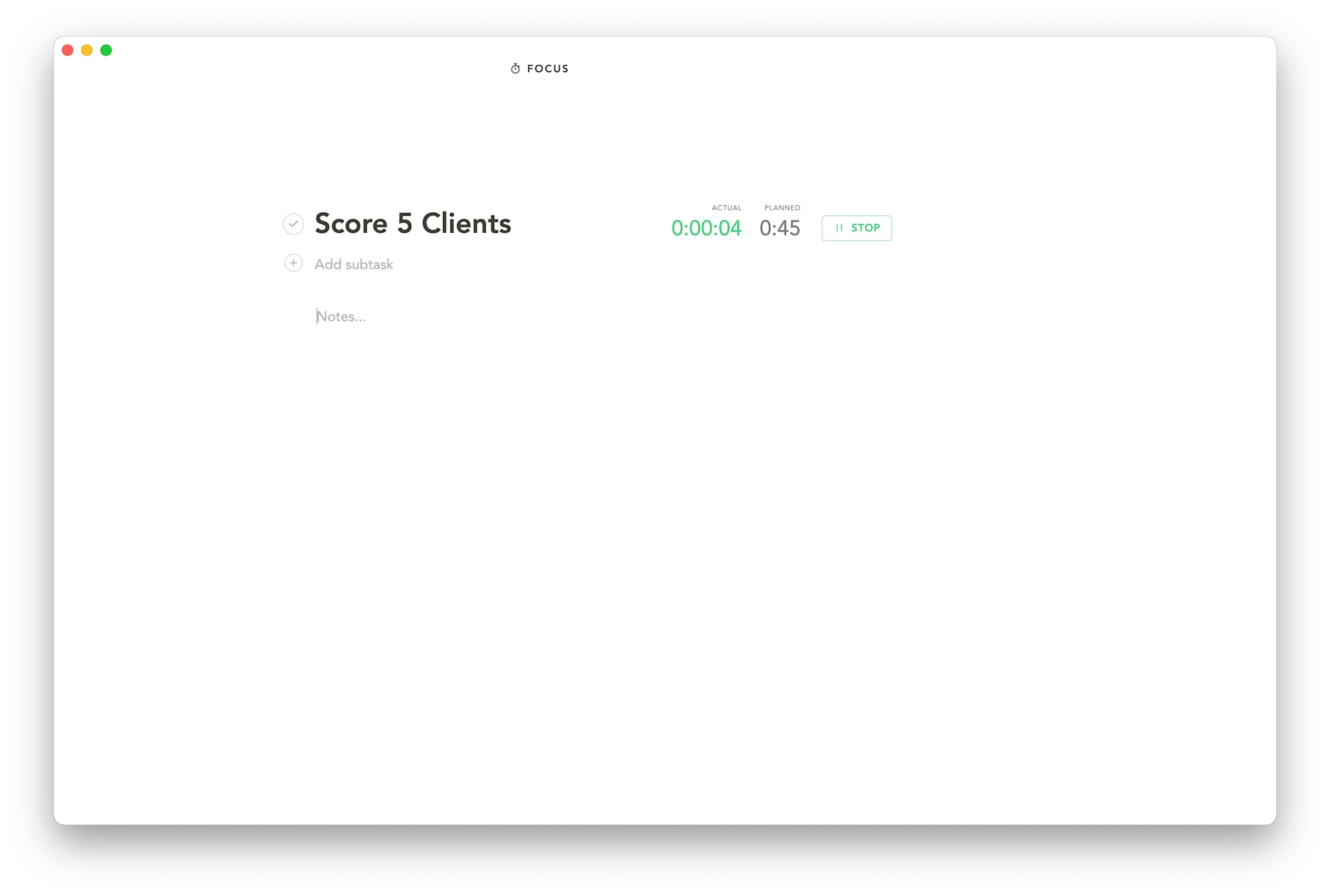
This is a standout feature in Sunsama. While available in Akiflow, it works a lot better, in our opinion, than Akiflow's focus mode. Per task, this works great (above), allowing you to see the task, add sub-tasks, start a timer, and set a project amount of time. If you exit Sunsama, the timer will follow you (at least on macOS), which makes focusing on the task at hand much better when browsing the internet.
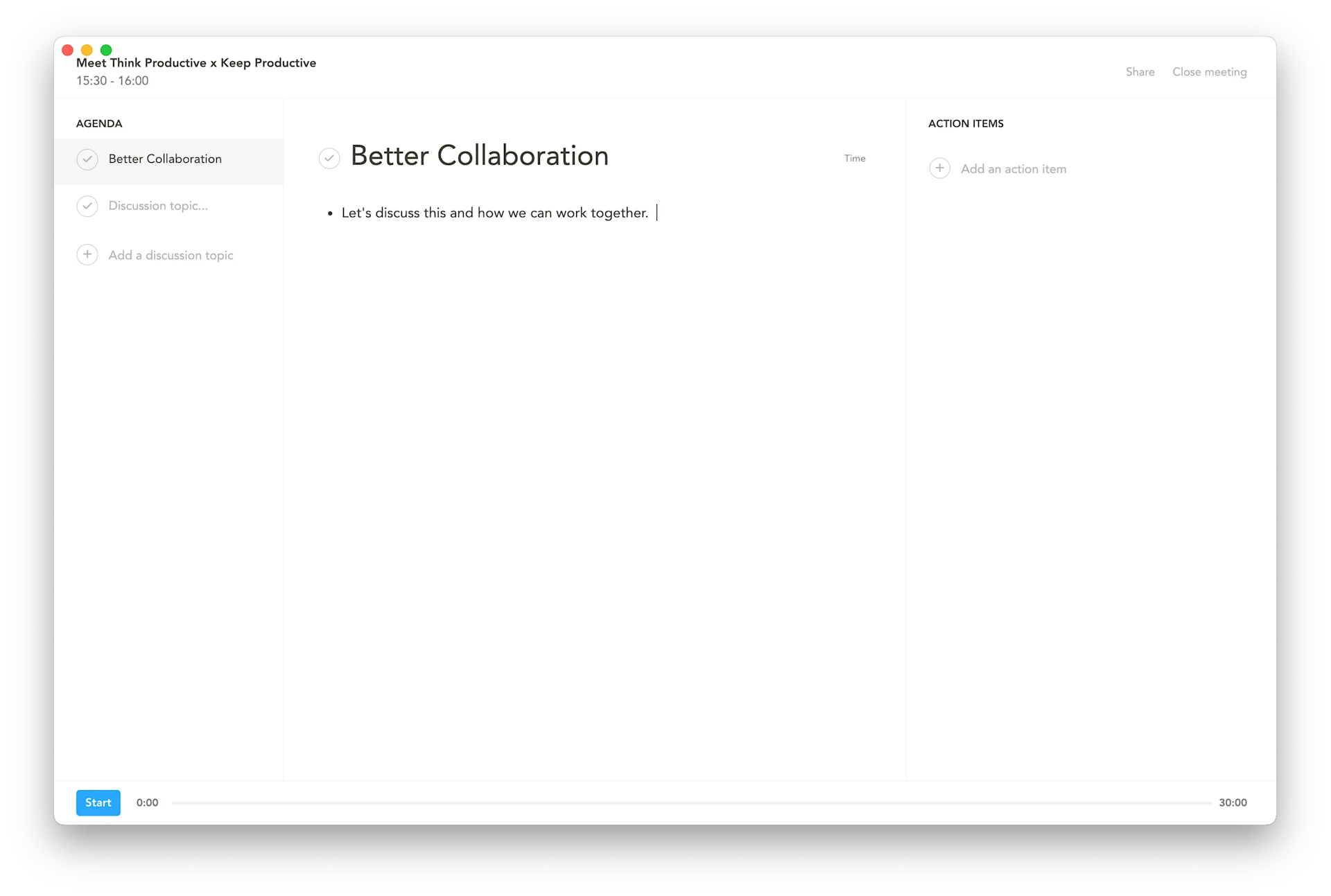
For meeting notes, you can create a Sunsama meeting, which is your meeting personal assistant and perfect for creating action items, discussion points, and general meeting notes when you're trying to keep focused. You can "run" a meeting and see a timer across all the discussions and make some extensive notes. (above)
Better Auto-Scheduling

Auto-scheduling is a neat feature inside Sunsama that doesn't quite rival fully-fledged AI systems that reorganize your to-do list. It will allow you to slot tasks into your busy schedule or even re-allocate them for another time.
Auto-scheduling is a relatively new feature within Sunsama and solves the issue of dragging into the calendar for quicker access the modal pops up next to the task for quicker use.This is something that Akiflow doesn't really have and allows for better-guided planning.
Feature Breakdown
Let's explore some of the more negative elements of Akiflow and Sunsama for you:
Akiflow Cons
Starting with Akiflow. What is not so good inside of Akiflow in everyday use:
Desktop Focused Experience
Akiflow offers an iOS and Android app that is out of beta, but like many other daily planner apps, it lacks the power that the desktop version truly uses. With this in mind, it is much more of a desktop experience that people tend to use as a reader on mobile.

Something to note: if you're coming from apps like Things 3, Todoist, or other such to-do list apps that have a good focused mobile experience, right now, you don't get that.
Sunsama Cons
These are the elements that we think let Sunsama down:
Reader Only Mobile
Sunsama has taken a read-only approach on mobile, meaning you cannot organize your calendar and tasks but merely view them. This is better for on-the-go needs but less so if you want to move things around.
This is fully intentional and something Sunsama advocates for, but in a mobile world, many users find this frustrating about Sunsama and really want to see a mobile application that allows them to use all the power features of Sunsama on iOS, Android, and iPad.
Annoying Widget
On the desktop version of Sunsama, there is a timer that feels very "annoying" that we find distracting when using in our test, it pops up when you start a task and we were unable to find out how to remove this ongoing.
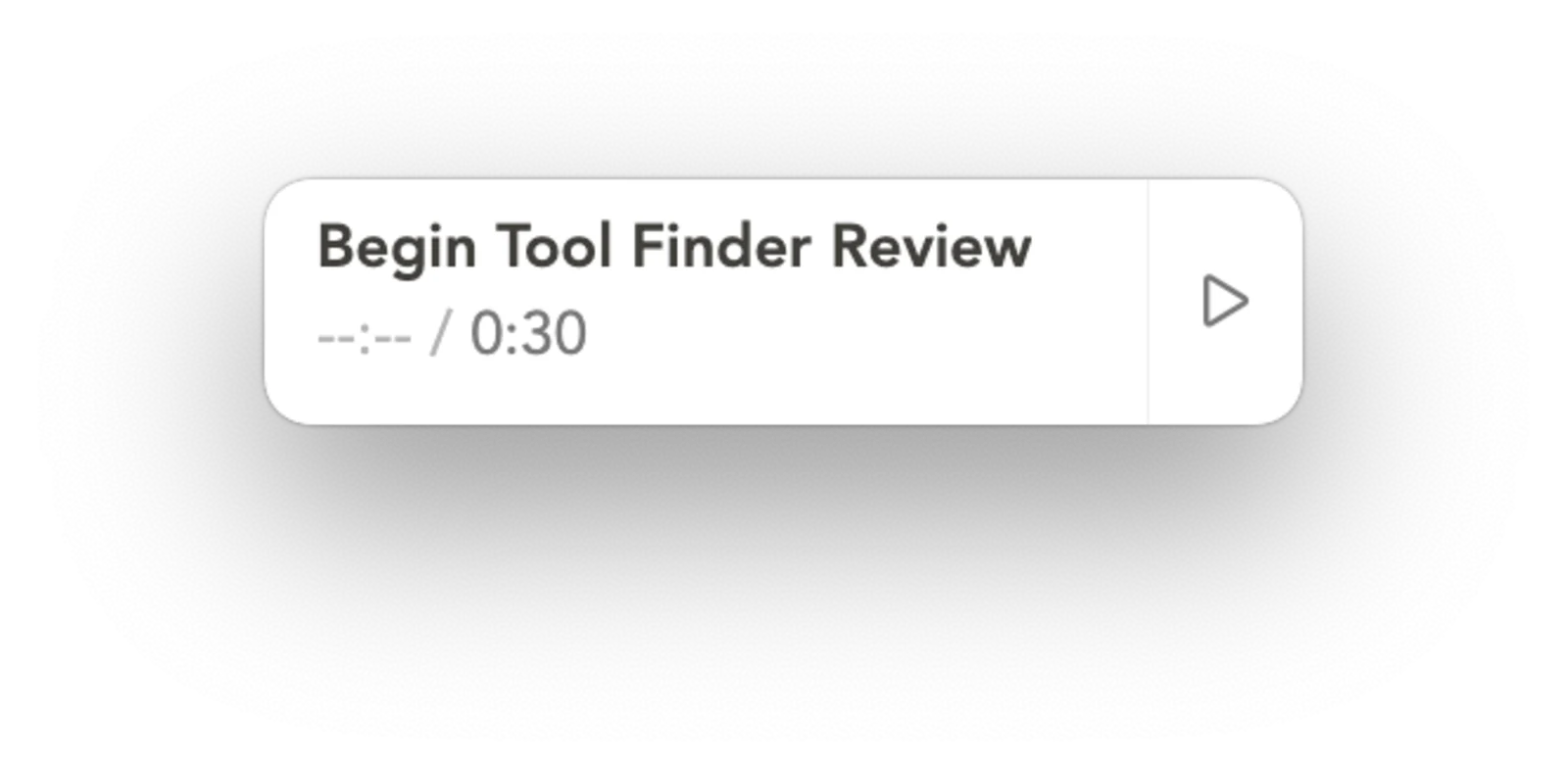
Pros:
- The most powerful for mindful planning
- Easy-to-use planning experience
- Comes with task consolidation
- Brings a good quality app for tasks
Cons:
- Can be expensive for many
Pricing:
Sunsama comes at $16 per month, billed annually, or $20 per month, billed monthly. No free plan.
Akiflow Pros & Cons
Here's all the good and bad bits we've found about Akiflow:
Pros | Cons |
|---|---|
Easy-to-use design for beginners and intermediate users. | The mobile (iOS and Android) apps aren't as impressive as software for managing tasks on the go. |
It combines task and calendar management, making it a popular solution for time blocking. | Akiflow takes time to learn and embrace new systems and ways of doing things tailored more toward visual thinkers. |
Task consolidation allows people to bring in tasks from apps like Todoist, ClickUp, Gmail, and more to help reduce context switching. | It can be deemed as pricier compared to other task management apps on the market. |
A range of views like calendar, upcoming, and plan allows you to see your tasks from a better angle for managing what's ahead. | |
Guided planning features called Rituals make it easy to close down your day and plan tasks that were not accomplished for the day into future days. |
Pricing Comparison
How does Sunsama compare with Akiflow?
- Sunsama charges $20 per month or $16 per month for yearly. So, if you choose the yearly option (the cheaper option), you will pay $192 per annum.
- Meanwhile, with Akliflow, the maximum you will pay will be $19 per month (yearly), totaling $228 per year, which is almost an additional month based on how much Akiflow costs.
- So if your budget is your concern, Sunsama is better for you. Saving $36 per year, and if you decide you want ed to play it by ear monthly, then Sunsama is better too, as you have a $20 per month option to play with it and take the "risk" with Akiflow it is $34 per month rolling, so not as good.
How much does Akiflow cost per month?
Akiflow costs $19 monthly, with a free seven-day trial if billed annually.
Plans | Pricing |
|---|---|
Solo Monthly | $34 per month |
Solo Annually | $19 per month |
Teams Monthly | $20 per month |
Teams Annual | $12 per month |
Is Akiflow free?
Akiflow comes with a 7-day free trial and no free pricing plan.
How much does Sunsama cost per month?
Sunsama costs $20 per month or $16 per month billed annually.
Plans | Pricing |
|---|---|
Monthly | $20 per month |
Annual | $16 per month |
Is Sunsama Free?
Sunsama does not have a free plan outside of the 14-day trial.
Akiflow or Sunsama? Which Tool?
Here let’s make it super duper simple for you to choose between Sunsama and Akiflow.
- Akiflow is better for someone who wants more detailed features and a less mindful approach to your tasks and calendar. There’s
- Sunsama is best for those who want a better work/life balance. Akiflow offers similar features but the premise of the Sunsama as a daily planner is to do this at the core and you notice this with focus mode, daily planning and pushing you to not overload tasks.
Go further with our reviews on Tool Finder to see which one is right for you.
Our Pick: Akiflow
This is our pick of the bunch, Akiflow offers a stronger overall feature package and seems like they are rapidly adding features which if you like a constantly updated product will be nicer for you. It won in all the categories we reviewed it against above.
Recommended Reads
Similar to your current reading interests:
Oops, undefined is still in development...
Weekly Roundup: Explore People's Productivity Tools
Become a reader to our newsletter exploring what productivity apps people use on a daily basis to get things done